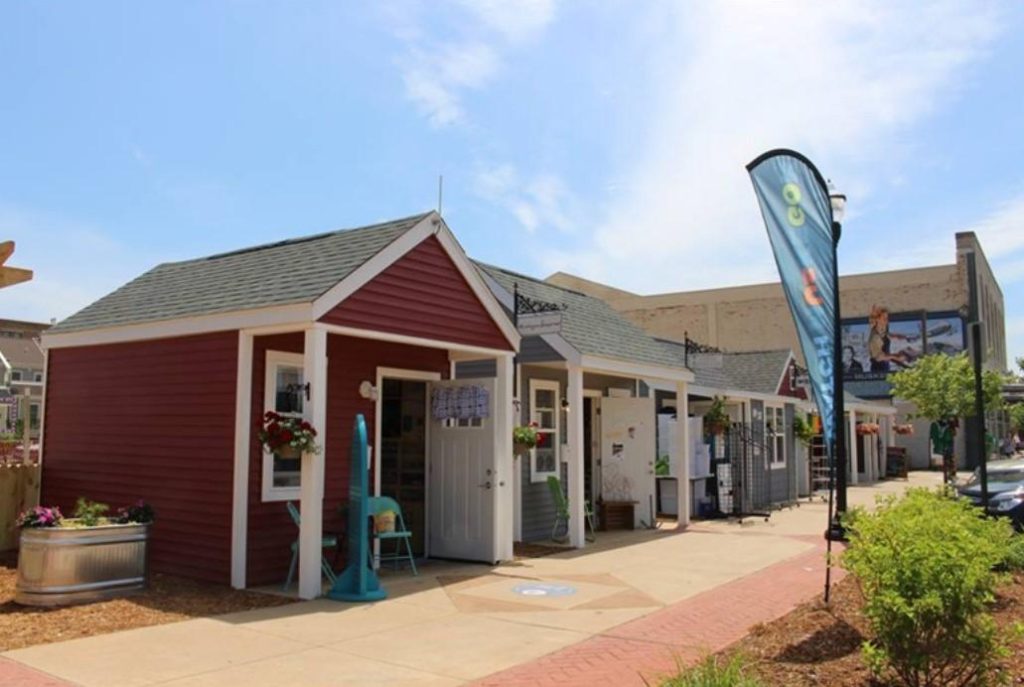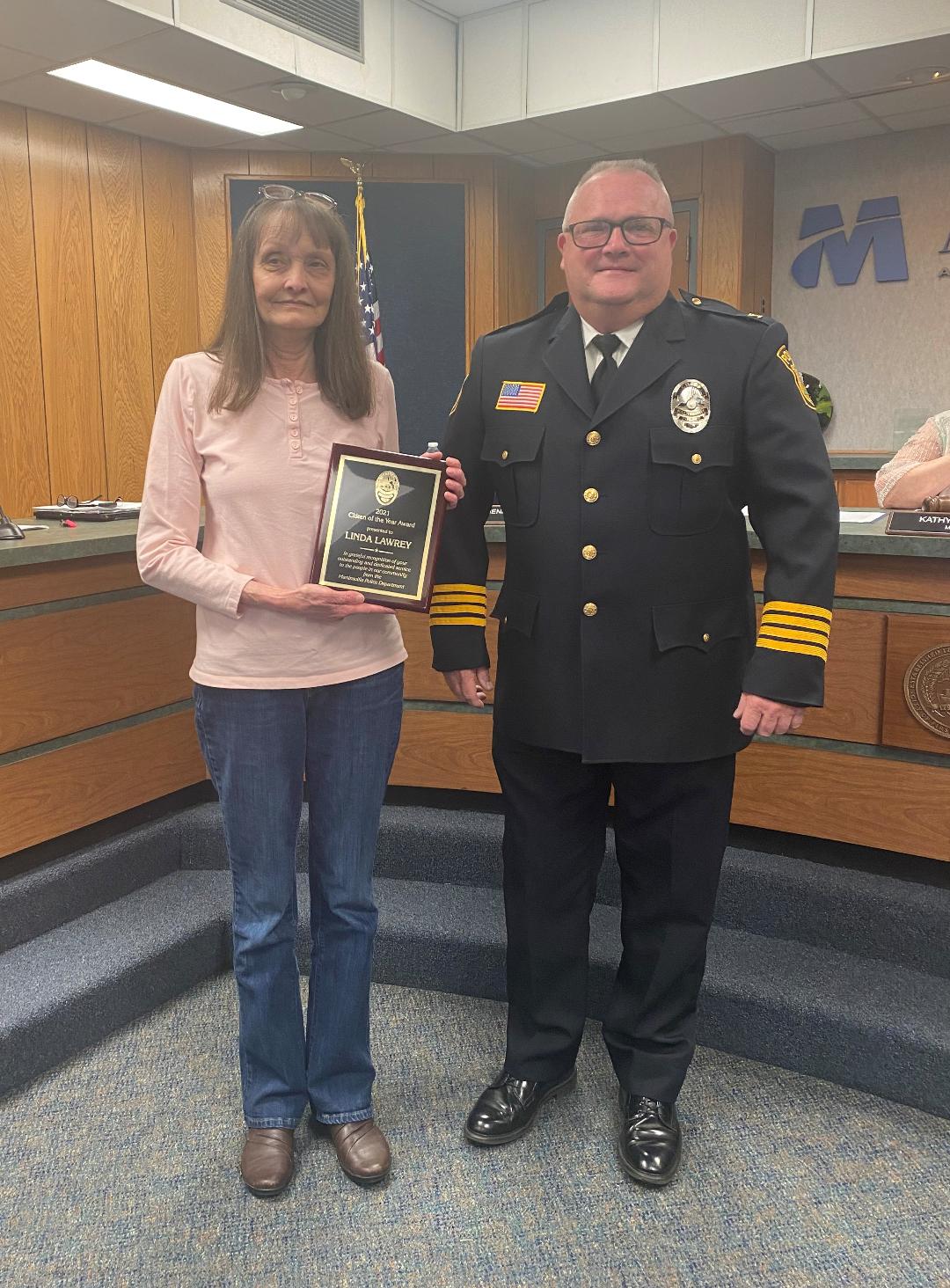By Callie Hietala
Martinsville’s Uptown Partnership (UP) unveiled the results of the recently-completed community-driven visioning project last week, which included sweeping recommendations for revitalization. The new vision emphasizes inclusiveness and entrepreneurship as the path forward for a successful revitalization effort.
Project director Chuck D’Aprix, of Downtown Economics, and team members from Community Engagement & Charrette Associates and the FORM Coalition shared the results of the survey and uptown visioning project with a group of around 30 stakeholders via Zoom last Thursday.
The project, which began in August 2021 with funding from the Harvest Foundation, sought to solicit community input on uptown’s future to form the basis of the new vision in what D’Aprix called a bottom-up approach—listening to community members about their vision for uptown, their priorities in its revitalization, and their past experiences in the district.
Collecting the data
D’Aprix said input was gathered through a number of outreach efforts, including drop boxes, door hangers and online surveys, conversations with groups and individuals, and even a dedicated phone line for people to discuss their uptown experiences and the changes they would like to see.
Team members sat down with focus groups comprised of faith groups and leaders, members of the Fayette Area Historic Initiative (FAHI) and the Minority Business Consortium, and nonprofit and youth leaders throughout the Martinsville area.
D’Aprix said he traveled to areas like Danville to collect outside perceptions of Martinsville and its uptown, and even sat outside of Walmart, Applebee’s, and CVS to engage as many as possible in the visioning process.
“What we heard in a nutshell was a need for social connection and places to gather,” he said. The team discovered there is a desire for more shopping and dining options, a need for housing and amenities, and for spaces to host culturally diverse and inclusive events.
He said respondents indicated a desire to celebrate a more diverse narrative of Martinsville’s history, including that of the Fayette Street community and the Martinsville Seven, and to incorporate more Latinx, youth, and other diverse voices in plans for uptown’s future.
The team used the input gathered from the community as the basis for its recommendations.
A hub of entrepreneurship
“The most important thing and the one that has generated the most discussion, is branding uptown as a center of entrepreneurship,” D’Aprix said, adding this is the only brand his team was recommending.
He said that throughout his career, “there are very few communities that I have seen that are as well-positioned to become a center of entrepreneurship as Uptown Martinsville.”
That branding, he said, means “every decision made by Uptown Partnership should be tethered to the concept of entrepreneurship,” allowing it to attract new entrepreneurs as well as offering support for existing businesses.
D’Aprix acknowledged there is a high failure rate for new businesses generally but, “if you build the right support mechanisms, and I think you’re on your way (to doing that), then you can lower that failure rate substantially.”
While he suggested a number of business opportunities that would do well uptown—a microbrewery, pizza shop, distillery, a boutique hotel—D’Aprix noted “we often can’t guess what the next good idea is going to be.” He said that the best path forward is to become an entrepreneur-friendly locality and let people bring their own ideas to the area.
“You’re going to see people with interesting ideas come forward, and the idea is to capture them and connect them to incentives, to financing, to training. That is what will work,” he said. “Will there be failures? Sure. But with the right program in place, you’re going to have successes.”
He said there are a number of proposals geared toward supporting small businesses and startups, including pop-up shops (UP has already hosted several), a single-site retail incubator in which multiple businesses would share space and expenses to begin a business, and even the creation of an entrepreneurship village—small buildings that can be rented for a small fee for businesses to begin selling their products.

Redesigned streetscapes, green space, historic preservation
“Invest in beauty and delight,” said Jodi Dubyoski, of the FORM Coalition, as she discussed the team’s recommended redesign of the uptown. She presented mockups of improved streetscapes and discussed a green space masterplan, all of which is geared toward unifying uptown both visually and practically as well as making it more attractive for visitors, businesses, and potential new residents.
Converting Main and Church streets to two-way roads was, Dubyoski said, noted in every previous report. In addition, she suggested closing Walnut Street to cars, making it a pedestrian thoroughfare, and adding an uptown bikeway that would connect with the Dick & Willie Passage.
Dubyoski discussed a number of suggestions from the group’s green space master plan, including the addition of a small grassy area to the Farmers’ Market which, D’Aprix later said is currently unwelcoming and underutilized.
“That could be a gateway into uptown if designed properly,” he said.
Other suggested improvements included a pocket park on Moss Street, a large civic park between Church, Market, Ellsworth, Cleveland to provide gathering space for larger events and festivals, and converting half of the Bridge Street parking lot to a park with a small amphitheater to take advantage of the largest trees in uptown which currently provide shade for parked cars.
Dubyoski proposed a number of changes to the Fayette Street area, most notably the addition of a 2-story commercial building at the corner of Market and Fayette, an important intersection that links Fayette with the rest of uptown. She said the building could hold retail space on the ground floor with office space above and a rooftop space, and could even be a location for one of the entrepreneur-friendly structures suggested by D’Aprix.
She also noted the need for façade improvements along Fayette, and suggested upgrades to the Fayette Area Historical Initiative (FAHI.)
Elsewhere in the presentation, D’Aprix discussed the need to find additional funding for FAHI. “The story being told there is very, very important,” he said.
In addition to the recommended new parks, bikeways, and streetscapes, the group encouraged the city and UP to preserve uptown’s history. D’Aprix said that Martinsville has not, in the past, prioritized historic preservation. Doing so would support economic development and tourism, as well as encourage reinvestment in the district and ensure environmental sustainability.
He noted that many of uptown’s buildings could be preserved and restored, and said the team provided several recommendations about educating building owners about historic preservation.
A racial divide
Veronica Fleming, another member of the visioning team, said during conversations with various groups, race emerged as a critical issue dividing the community and affecting the economic vitality of uptown.
“Clearly there’s been this historical division that is not a secret to anyone,” she said. “Any recommendations that we made are very intentional about being inclusive of all diverse voices.”
She said she heard feedback about the decline of the Fayette Street corridor, with some pointing to New College Institute (NCI) as a physical divider between the historically Black area and the rest of the uptown district.
“As a result, clearly the African American community does not support uptown businesses in large numbers, and that needs to change,” she said, and added that the revitalization process was an opportunity to include that area in any uptown improvements.
(Note: During initial conversations about a site, NCI’s current location was selected to help bridge the gap between the two areas, serve as an economic driver for both and ensure higher education was within reach for all.)

Organization and leadership
The team’s recommendations extended beyond projects that could move Martinsville’s uptown forward—D’Aprix and his team also made suggestions for new hires and community volunteers to help keep the revitalization alive and, more importantly, incorporate diverse voices in the process.
“It’s vitally important to create an ongoing, multi-layered, racially and culturally diverse community engagement process that is long-term,” Fleming said. “This process will not happen just by the good will of the community. It must be intentionally staffed and staffed over the long-term of this process.”
To that end, Fleming said the group recommends hiring at least two additional staff, one at the Harvest Foundation and the other at UP. Both positions would be geared toward community engagement and help to activate the communities that have thus far largely been left out of discussions about revitalization.
Fleming recommended the creation of an intentionally diverse steering committee, organized by UP, to oversee and implement all the strategies identified through the visioning process, to prioritize projects, and to set milestones that represent progress to the community.
Fleming said the committee should be 47 percent Black, 47 percent white, with the remaining 6 percent to include other ethnic groups reflecting the community.
She suggested 7 to 13 committee members, which should include representatives from Harvest, the city (and/or Henry County, depending on the outcome of the reversion process), the Chamber of Commerce, a minimum of three faith leaders -each representing a different race, school administrators, nonprofit leaders, representatives from NCI, Patrick & Henry Community College, and Longwood University. In creating the committee, Fleming urged UP look beyond racial diversity and think too in terms of youth and gender makeup.
She noted that presentation of the study was only the beginning of the work, and that more work will be required if the new vision for uptown is to be truly inclusive.
“We just began this process,” she said. “There are so many more voices that need to be at the table, and I want to honor the fact that we need to do much more work in engaging the Latino community, residents, and businesses in this process as well as the youth force.”
At the end of the presentation, which lasted well over an hour, UP Executive Director Kathy Deacon thanked the group for its efforts. “We look forward to engaging with our community deeply and broadly as we look to prioritize some of the recommendations you have made,” she said.
Deacon said the complete study, which gives in-depth detail about the results of the visioning survey and more complete version of the recommendations by D’Aprix and his team, will be made available on UP’s website in the coming weeks.







